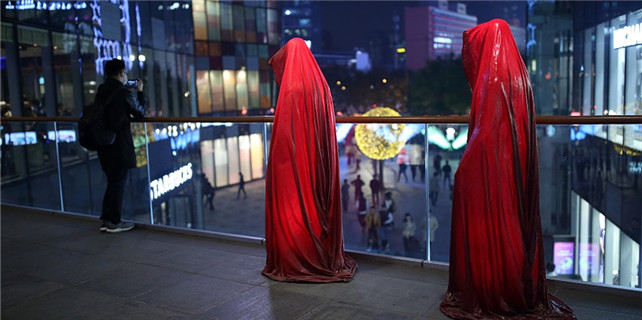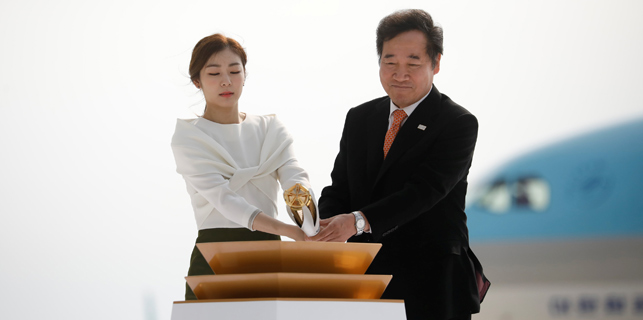The commercial solution to preservation
A newly refurbished villa in Shanghai by Prada has shone the spotlight on the contentious issue of how historic architecture should be best conserved
The restoration of Rong Zhai, an old garden villa in Shanghai, by Italian luxury house Prada has garnered such overwhelming interest that the latter has extended the public viewing phase of the century-old property to Dec 17.
Michael Rock, creative director and co-founder of New York-based creative agency 2x4, lauded the effort and dismissed the notion that it was merely a promotion stunt by Prada.
"A lot of big Western brands want something from China, so they come into the country, set up a big event in a hotel and then disappear," said Rock, during an interview with fashion magazine W.
"But what's interesting about this project is that it was really about doing something real. It's not just a facade. It's been done with care," he added.
The refurbished villa has also reignited debate about whether historical residences in the city should be used for commercial purposes — Rong Zhai will be used to host exhibitions and events — or retain their original purpose.
Some preservation experts believe that having a commercial entity take over a heritage space is tantamount to diluting the significance of the building's history. Some also believe that the onus is on the government to preserve heritage architecture.
However, Wu Jiang, executive vice-president of Tongji University in Shanghai, argued that the commercialization of such properties is currently the best way to preserve them as companies have the financial power to do so.
"It's not only the government's responsibility to preserve these houses. The lack of sustainable financial support is a key setback, which, if not solved, can become the bottleneck of the situation," said Wu, who is also an architecture professor who has been actively involved in the preservation of heritage houses in the city for the past few decades.
"Presently, to pass these houses to companies, especially those that have expertise in restoring and managing heritage architectures, seems to be the most, if not only, effective solution," he added.
There are a handful of heritage houses in the same neighborhood as Rong Zhai that have been restored by companies as well.
The most notable one is Bei Zhai, an 800-square-meter garden villa which was built by Tsuyee Pei, a wealthy banker and the father of famous Chinese architect Ieoh Ming Pei.
The property features a design that combines Art Deco and Chinese elements, and is equipped with contemporary furnishings such as an all-glass bathtub and an Otis elevator that is believed to be the first of its kind in Shanghai.
The property was for decades used as the office building of the municipal government's transportation department before it was renovated and reopened as a 25-room boutique hotel in 2010.
Many luxury brands have also moved into the old villas located along Huaihai Middle Road, one of the city's busiest shopping streets, over the past few years.
The Richemont Group's Dunhill and Vacheron Constantin boutiques are currently the tenants of the garden villas at No 796, while Hermes Maison can be found in a four-story heritage house a 15-minute walk away.
There are numerous historical mansions around Shanghai and they stand as a reminder of the various cultures that entered the city when it was turned into a major port for foreign trade in the mid-19th century.
Shanghai presently has 3,075 heritage architectures in 16 districts, some of which were built as early as in the 1920s. The majority of these buildings are residential villas and there are also a number of old warehouses and university halls.
Wu noted that the importance of preserving historical architectures lies in the fact that every city can build as many skyscrapers as they want. However, what can truly differentiate Shanghai from New York, Milan or London is buildings from the past that encapsulate a part of the city’s history.
At the beginning of the year, the municipal government updated a statement on the official website of the Ministry of Housing and Urban-Rural Development, saying that the administration is determined to add more houses to the list of protected heritage buildings by introducing "architecture census" to those that have been standing for more than 50 years. The authorities said they will also hasten the pace at which dilapidated houses are preserved.
One of the most notable homes to be preserved in recent years is the villa where Soong Mei-ling and her husband Chiang Kai-shek stayed in following their marriage in 1927.
Located in the same neighborhood as Rong Zhai, the two-story British country style house was the base of operations for Soong's charity foundation from the early 1990s till 2014.
Han Zheng, Shanghai's former Party secretary who was elected as a member of the Standing Committee of the Political Bureau of the CPC Central Committee, said earlier this year that decision-makers should ditch the old mindset that the only way for the city to progress is to replace old buildings with new ones.
Han said that authorities in the city are working based on the principle that old architecture located in downtown Shanghai should be preserved, unless exceptional circumstances require their removal.
He also pointed out that Shanghai should undergo an "organic modernization" by breathing new life into old architecture.
xujunqian@chinadaily.com.cn
















